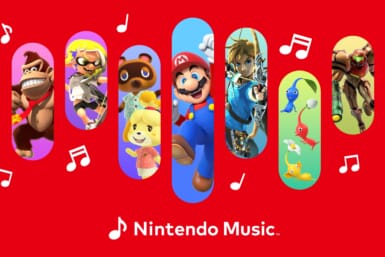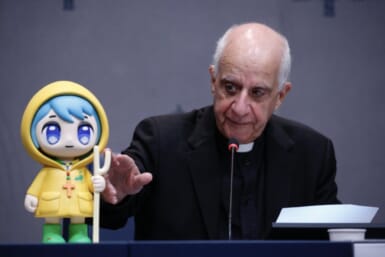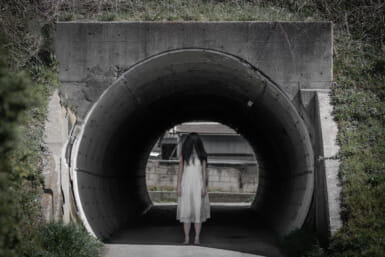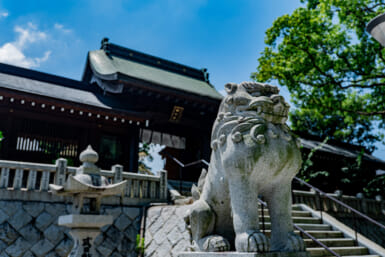If seeing the likes of Demon Slayer and Attack on Titan everywhere in Japan right now hasn’t made it abundantly clear, anime is experiencing a resurgence in popularity like never before. Certainly, classics like Naruto, One Piece and Dragon Ball are some titles that predate this era and have achieved worldwide recognition. But anime is now more prevalent in the mainstream market with Uniqlo collaborations, exhibitions in public spaces like Shinjuku Station and the global box office success of the movie, Demon Slayer: Mugen Train.
Here in Japan, three experts and long-time contributors to the anime, manga and gaming scene have helped foster this boom with a podcast about the subculture. Joey, Garnt and Connor or The Anime Man, Gigguk and CDawgVa as they are known on their individual YouTube channels, have joined forces to create Trash Taste, a space where they laugh, banter and argue about their hobbies and interests.
We sit down with the three men, who recently hit one million subscribers on the Trash Taste YouTube channel, along with their manager Meilyne to chat about how the landscape of Japanese media is changing and the secret to making it big on YouTube.
1. What first brought you all to Japan and how did you guys conceive the idea of Trash Taste?
Garnt: All three of us have been making content that revolves around anime and Japanese culture for quite some time. So, when two of us got the offer to come to Japan by GeeXPlus (Joey is Japanese and has been living in Japan prior to this), it seemed like a natural progression since we were making content about Japan anyway. We’ve also been friends for a few years now and have always had this idea to make a podcast together. But we wanted to do this once we were in the same vicinity as each other. And now years later here we all are, living in Japan.
Connor: Being in the same place was key and the rest of it just all came together. A lot of anime podcasts from before our time were just recorded Skype calls between friends located in different places. We really wanted to change that dynamic.
2. How has the mainstream acceptance of anime evolved from when you first started developing a personal interest in it to where it is today?
Garnt: It’s way more accepted these days. When I was younger, I had to pretend that I didn’t watch anime because anyone who did would get bullied. So, it’s quite surreal seeing that something I used to keep as a secret, is now really popular and out in the open.
Connor: Anime is popular now and there’s references to anime everywhere, you can see it in collaborations with brands like Louis Vuitton and Gucci. Not only is it super mainstream but it’s seen as fashionable and unique. Especially if you’re active in the online community, everything has an anime reference, you can’t escape it.
Joey: It’s insane to think that even five years ago, no one could even fathom that they could talk about anime for a living. But now it’s gotten to the point where it’s so much more accepted in the mainstream that people are very open to the idea of Japanese animation and many more people are talking about it.
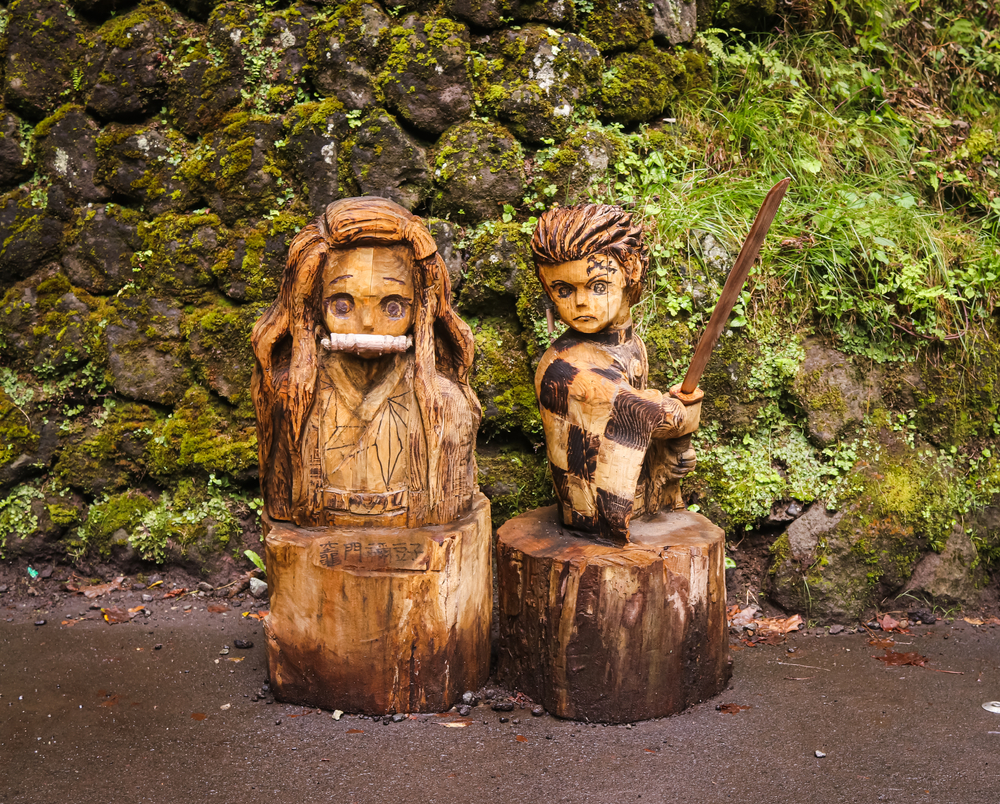
Hannari_eli / Shutterstock.com
3. What are some good entry point anime and manga recommendations for people open to exploring but have no idea where to start?
Garnt: Honestly, I’d have to go with Attack on Titan. It’s super popular and very visible in the mainstream, but even veteran anime fans can’t help but admit that it’s good. Attack on Titan is to anime, as Game of Thrones was to TV shows back in its heyday.
Joey: Absolutely, even the critics are like, “I want to be harsh on it but I can’t” because it’s just such a good and well-produced show.
Connor: I’d recommend Death Note and Full Metal Alchemist. One Punch Man too, especially as season one is such a great show.
Joey: There are also some popular ones like My Hero Academia or Demon Slayer. I mean, as much as there will always be that one critic that is super opinionated about them in a negative fashion, they are still great entry points into anime.
4. What do you think has been the secret to the podcast’s success?
Garnt: Honestly, we don’t know.
Joey: In half of the episodes, we don’t know what we’re talking about until 30 seconds before the cameras turn on.
Meilyne: The secret is in the power of friendship!
Connor: We’re very good friends and we also have three pretty different personalities and I think that comes through a lot.
Garnt: Yeah, we’re obviously close and that energy exudes through our videos. But even though we’re friends, we do argue a lot because we don’t agree on everything and I think that sets our podcast apart from the rest. With other podcasts, hosts will try and achieve consensus, whereas we tend to bicker over the smallest things.
Joey: We basically act like we would even if the cameras were turned off and for a lot of people, they like that. They appreciate that we’re very genuine and not afraid to be ourselves.
Connor: But truly, we’re just as shocked as everyone about how much they love Trash Taste.
Garnt: At the beginning we set a goal to get to 100,000 subscribers after a year. We saw this goal as a realistic and achievable milestone. Somehow, we reached that within a week. We really didn’t expect it to become so popular and now, we’ve just hit 1,000,000 subscribers.
Meilyne: When they shared their estimates with us at GeeXPlus, we thought they were lying. No one, not even we expected this so it’s incredible how much Trash Taste has grown.
5. How do you see the differences between your identities on Trash Taste versus your own individual YouTube channels?
Joey: I don’t think it’s about our personalities changing but a branding exercise. When we were making clips for Trash Taste, we had to decide for example, whether we would title it as something like ‘Connor telling a story’ or ‘CDawgVA telling a story.’ We went with the former because we tend to get more personable on Trash Taste. This isn’t to say we aren’t on our own channels but there’s a certain rawness on Trash Taste and we figured it made more sense to move on from our usernames and to allow people to get to know us for who we are.
Connor: Another way I look at it is that our YouTube channel is a highlights reel of our best work, whereas Trash Taste is just us, mistakes and all.
Garnt: Especially with these two (gestures to Joey and Connor), they aren’t really happy with their usernames in terms of how they want to be referred to. Joey is always trying to escape being “The Anime Man.”
Joey: Calling myself “The Anime Man” is the biggest regret in my entire life – I think it’s a terrible name.
Connor: Also, I think people on YouTube now are more prone to using their actual names. When we started, it wasn’t really the thing to do.
Joey: Yeah, back in the day it was better to keep information like that hidden.
6. What have been some of the challenges in creating a successful podcast?
Garnt: The biggest challenge was the logistics in figuring out how we were going to pull this off. A lot of work went into figuring out things like set design, audio engineering, cameras and even the lighting. These are all things you wouldn’t normally consider on an audio-only podcast. We relied a lot on Connor, but there was a lot of experimenting done on the job.
Connor: The audio was the part I was most confident about. The rest of it was us trying
something for the first time and hoping for the best. But in terms of partnerships and branding, we haven’t really had a problem with working with sponsors. We find that most brands are happy to collaborate with us as long as we give them the visibility, even if our podcast isn’t necessarily the “safest” one out there.
Joey: It helps that all three of us already have experience working in visual marketing and
participating in brand collaborations on our own channels so that part was quite doable.
7. The majority of the Trash Taste community seems to be on Reddit and Twitter. How did you guys come to the decision to use these platforms as opposed to say, Facebook?
Joey: Facebook is a very weird platform for social media marketing, especially for YouTubers. For brands it might make more sense. I do have a Facebook page for The Anime Man but it’s really targeted towards a very specific type of demographic that uses it.
Connor: It’s a completely different platform. Simply putting a podcast link on Facebook isn’t going to do anything for us. We could post on Facebook, but we’d have to cut different sections and edit it with different music and effects to make it more digestible for that platform. Trash Taste would have to be edited down to the point where it’s bastardized and not even Trash Taste anymore. We’re not really interested in that.
Meilyne: Facebook also doesn’t like it when you link outside of their platform either, so it wouldn’t do well to share our YouTube links.
Garnt: Every platform requires a different strategy. We mainly focus on YouTube, Reddit and Twitter because these are the platforms that we understand the most. And we’ve been able to because we’ve grown on them ourselves and built our audience there from the beginning. A lot of companies like to say that they want a big presence on XYZ, but they then go on to hire someone who has no experience or who doesn’t even use that specific platform. It’s a big fallacy. Part of being successful online is really understanding the platform, the community and the culture on it. Otherwise you end up sounding like someone who’s out of touch and trying to connect with the kids.
Joey: We also didn’t want to overwhelm Trash Taste with numerous different accounts. We have a hard enough time keeping up with our own individual platforms as it is. So we decided to keep it small and minimal with Trash Taste.
8. Do you see what you’re doing as part of the media and entertainment industry or perhaps the next iteration of it?
Garnt: We’re still figuring this out right now for ourselves. The industry is so new that we’re basically writing the rule book on how to have a career in anime as an entertainer, as we go along.
Joey: Garnt is literally the longest running anituber who has been able to do this full time, so there is no previous example of someone who has been able to do this before us. And again, because it’s such a new industry and the rules are constantly changing, no one really knows what the future holds for the platform.
9. How do you keep your public image separate from your private image? Are there mental health implications with being a public personality?
Garnt: At this point we’re smart enough to know what we can share and what should be best kept private. It’s hard to describe but we’ve just been on the internet long enough to have this unwritten understanding.
Joey: My rule of thumb is if I type out a tweet or take a picture and stop to think to myself, ‘Should I post it?,’ I just don’t upload it. If I’m second-guessing myself then it’s best not to post it. Because once it’s up, it’s up and you can’t take it back.
Connor: I think: ‘Am I okay with anyone who ever meets me knowing this information?’ If yes, then okay, I’ll say that. If not, then no. But the things we post on Trash Taste range from showing everyone what we’re working on to maybe just a funny meme, it’s quite contained.
Garnt: In terms of mental health, it’s a learning process. As I mentioned, this is such a new
industry so everyone is figuring things out for the first time. There is a stereotype that every YouTuber eventually does take a break to focus on their mental health. But because of that, there is a much greater awareness of the burden that a content creator carries so the public knows this and we don’t have to deal with it silently. And if a YouTuber does need to take a break, the community is generally more understanding.
Connor: I think as a guy, you can play off [the hate comments] and make it part of a joke. For me personally, I just don’t care about it anymore. And if you show that you don’t care, people will stop saying mean things about you because it’s not affecting you. But it’s a lot harder for women as people can be way harsher on women than on men. I’ve seen the comments section on some female-run YouTube channels and I honestly don’t know how they deal with it.
10. What’s next for Trash Taste?
Joey: We want to do a US tour when the world is back to normal. But currently there’s not a lot we can do with evolving the podcast. At the time of recording this, Japan’s just extended the state of emergency. I think what we’ll do is maintain Trash Taste at a good level for now until the world opens back up and we can start to grow.
11. What kind of advice would you give to aspiring content creators?
Connor: In terms of audio podcasting, I’d say listen to those that have done well in the past. Really get to the core of them to understand why it works and what are the things that they do to keep an audience engaged.
Garnt: With content creation, you should also be watching a lot of content. If it’s YouTube that you want to get into then watch a lot of YouTube, enough so that you can understand how a piece of content succeeded. One of the reasons Trash Taste grew so quickly is because we had an original idea of how to market our podcast by uploading a video on each of our channels with everything culminating on our podcast. It would have been impossible to come up with this if we didn’t know how YouTube worked.
Joey: Hey and most of all, have fun!


